I’m a boat nut. I’ve built and rowed, sanded and sailed, painted and paddled most of my life. One of my favorite activities is gliding around a harbor in a dinghy, rowing or sailing, working up an appetite for steamed shellfish. Another favorite is my job teaching boatbuilding at The Carpenter’s Boatshop in Pemaquid, Maine. This offers endless hours of boat talk, swapping stories, and trying to convince the listener that your way of doing it is the best solution. Well, the opportunity to talk with Arch Davis and take a look at his latest design, GRACE’S TENDER, allowed me to indulge both interests. Davis honed his design and building skills in New Zealand and has since brought both to the waters of midcoast Maine. GRACE’S TENDER was designed as a project to be completed by his daughter, Grace, now 12, with the close support of her dad and his workshop.
The boat has been drawn wide to provide initial stability. There is a nice transition from a shallow V-bottom shape in the middle of the boat to a deeper V forward that requires about as much twist as you can demand from plywood panels. This yields lots of interior space on a very short waterline. Don’t ask to put too much adult weight onboard without affecting performance. At 55 lbs, the hull is lightweight, easy to carry, and can be cartopped with the appropriate rack. The rig is a standing lugsail that puts up a generous area on short spars for portability and easy storage.
Construction is glued-and-screwed marine plywood, a system used for many modern small boats. This renders a light and strong hull that won’t leak when launched after extended periods ashore. The strongback on which the temporary building frames are attached is quite rigid, yet the frames seem to flex until the bottom and planking are attached. In my opinion, the whole setup may benefit from an additional temporary brace or two. The stem is an interesting lamination of plywood and softwood. The plywood inside gives cross-grain stability, while the softwood sides provide an easy-to-carve landing for the planking.
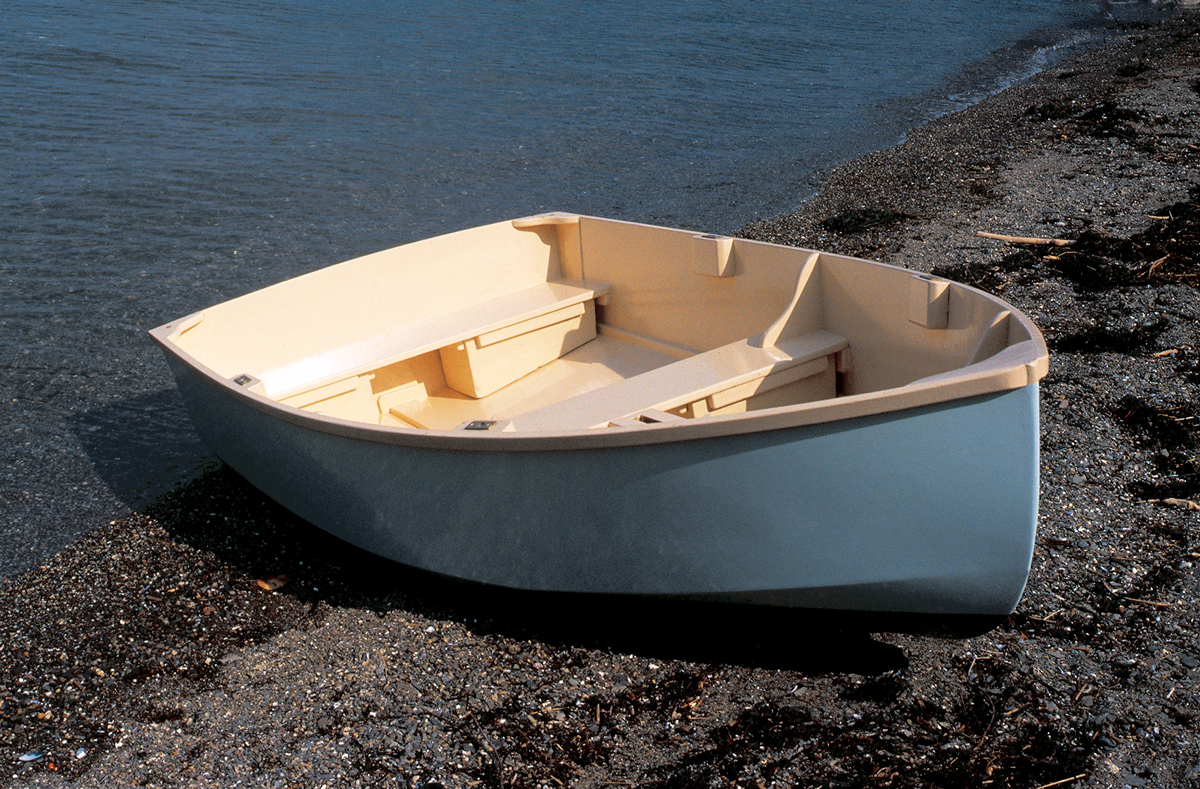 Photo by Arch Davis
Photo by Arch DavisGRACE’S TENDER is a kindly little plywood boat that Arch Davis designed to build with his daughter, Grace. This handsome and capable craft is an exceptionally good first boatbuilding project.
The joint between the bottom and the topside planking changes from a lap at the chine to a butt in the area of the stem. This sort of mimics the gains in traditional lap-strake construction. Achieving a smooth transition here may be a challenge to a first-time builder, but the description and details are well laid out in the plans.
I’m not a great fan of daggerboards, having seen the results of altercations between rocks and boards on larger boats; however, this boat is the right place for one. While daggerboards require some attention in shallow water, contact with the mudflats in a boat this light should just bring you to a halt and remind you to pull up a bit sooner. Daggerboards are also slightly easier to build and install than centerboards. Arch has chosen a kick-up rudder. Although more complex to construct, kick-ups protect this vital piece of equipment from damage when sailing in thin water, and allows continuous directional control.
The building package for GRACE’S TENDER consists of an 80-page manual with over 100 photos, a section on material sources, discussion of tools, a complete glossary, and sage advice on building and using small boats. Also included are full-sized Mylar patterns for every piece, something any builder will appreciate. No lofting, no paper patterns to tear or stretch, and no small-scale drawings that require careful scaling up. The gem of the package is the optional DVD documenting each step of construction, starring Grace Davis, my nominee for an Oscar.
 Photos by Arch Davis
Photos by Arch DavisAmazing Grace. While her dad took on more dangerous jobs like ripping long pieces on the tablesaw, Grace did the majority of the boat’s construction herself.
A few photos lack detail, but in combination with the text and the DVD, almost every aspect of construction is covered. The exception is painting. While building and woodworking techniques are somewhat consistent, there are many different ways to finish off a boat. Here, your personal style calls the tune. Anyone wishing for a yacht finish should consult one of the many good books and articles on painting and varnishing. Someone like me might be so anxious to get this duck in the water that a couple of coats of leftover marine paint would do the job, thank-you-ver y-much, and pass the oars please.
With plans in hand you can search out your own lumber and fastenings, or you can opt for the kit that comes complete with all plywood, lumber, epoxy, fastenings, and sailing rig. While these options are available from other designers, the vast amount of detail provided makes GRACE’S TENDER stand out. Back at The Carpenter’s Boatshop, I asked one of our first-year apprentices to look through the package to gauge whether she felt it contained all that was necessary to build the boat. She agreed that it is a clear and thorough set of plans and instructions.
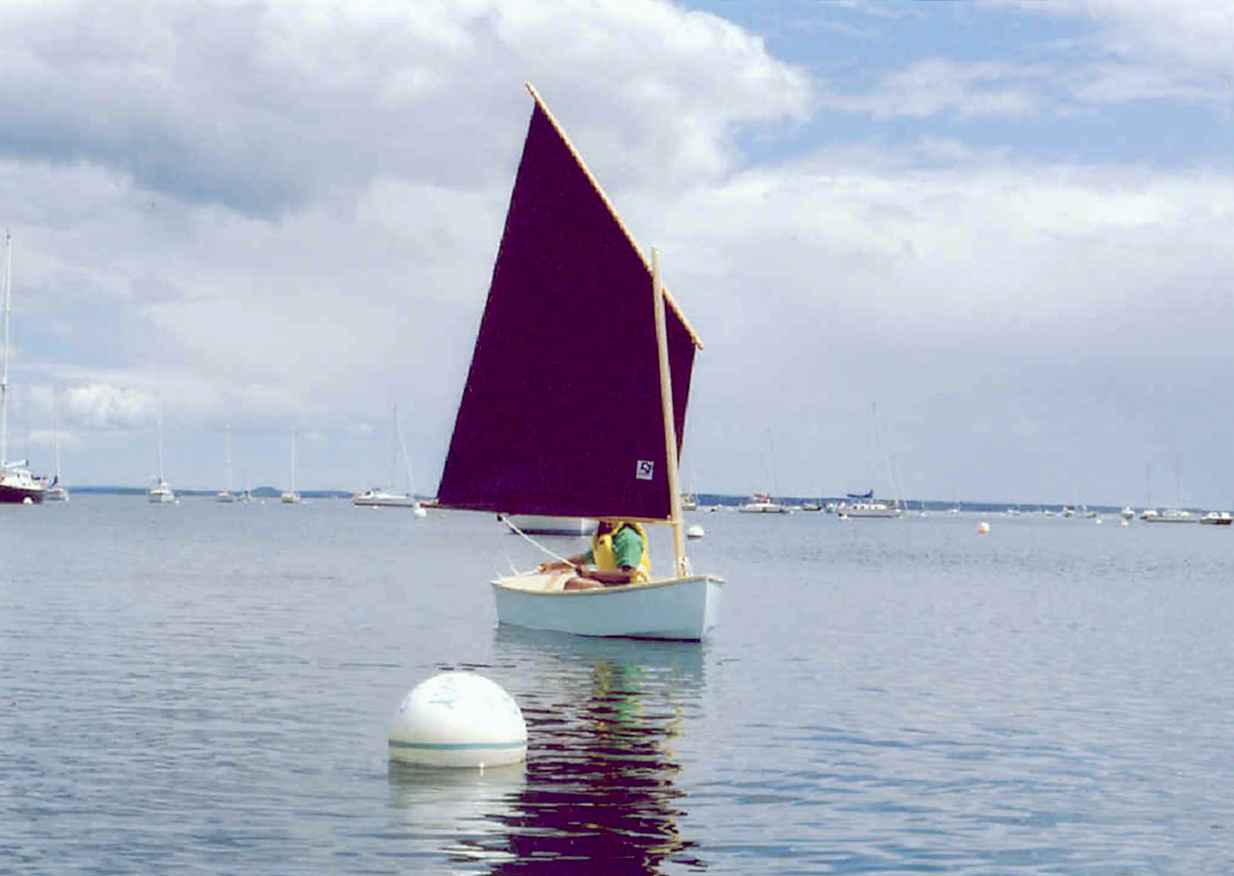 Photo by Arch Davis
Photo by Arch DavisWhile GRACE’S TENDER is a fine boat for a youngster to sail in light winds, she also makes an able yacht tender.
Finally, I feel that a very important aid in any boat-building project is having access to the designer. While not always possible, it’s really nice when you can connect. When you call Arch Davis Design, you get Arch Davis on the phone. His personal interest in each boat is evident and he will talk you through the sticky places.
As a first boatbuilding effort or as a several weekend adventure with the kids, GRACE’S TENDER is close to the ideal. Now, clean out one side of your garage, go forth and build, and when you’re done, keep an eye out for those perfect harbors and steamed shellfish.
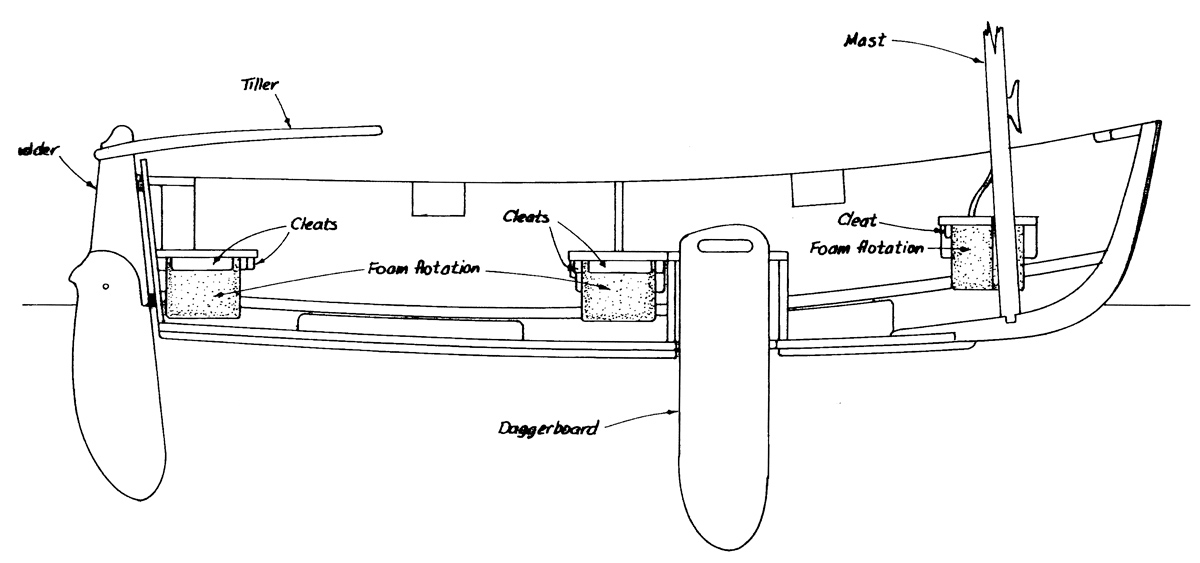
GRACE’S TENDER’s inboard profile plan clearly shows the major fitting-out components: seats, kick-up rudder, daggerboard, mast, and the all-important foam flotation. The foam provides an extra margin of safety for kids learning to sail and row.
This Boat Profile was published in Small Boats 2009 — for more information, visit Arch Davis Designs.
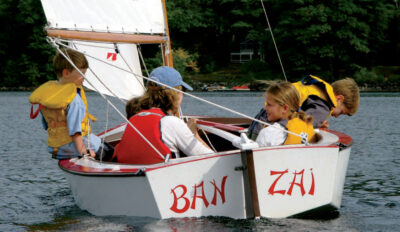
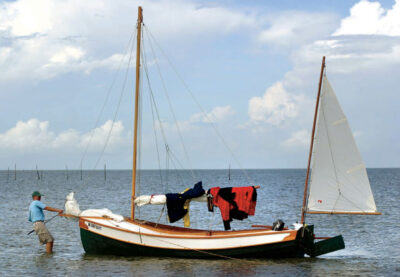
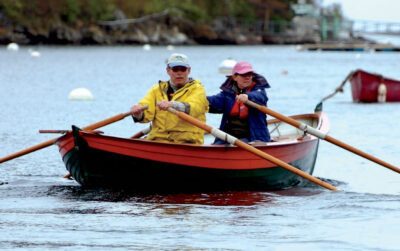
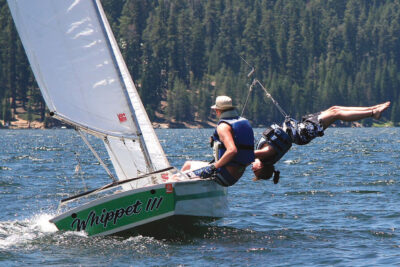
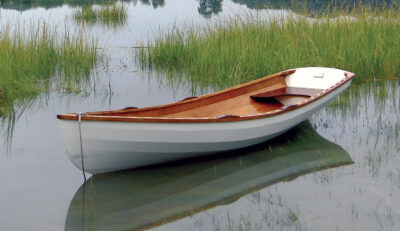
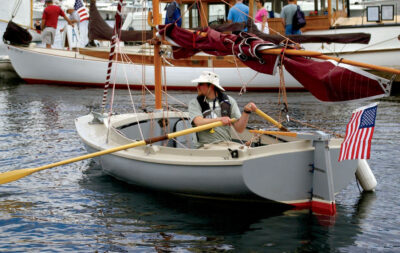
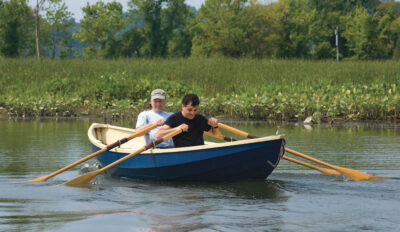
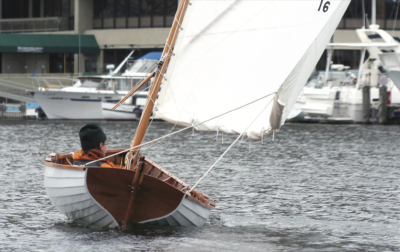
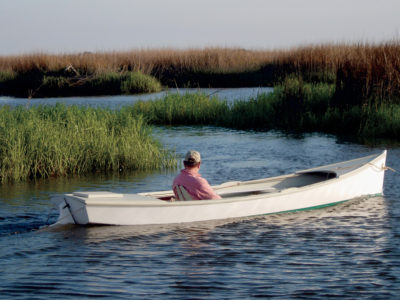
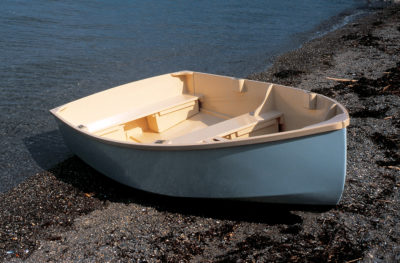


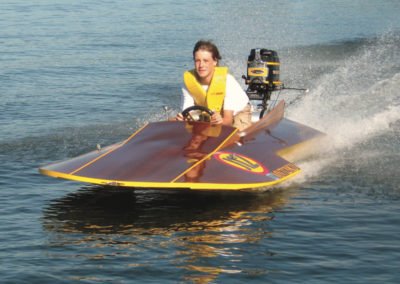
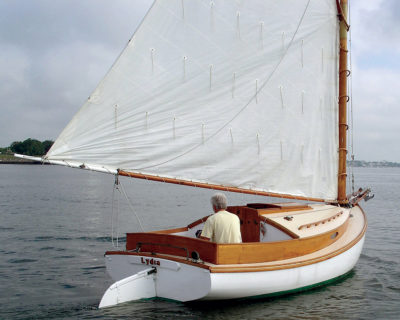
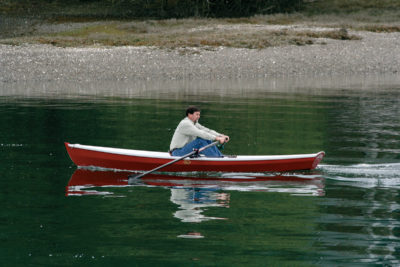
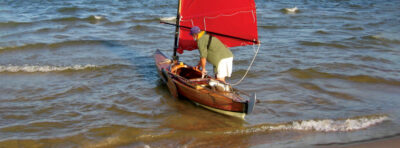
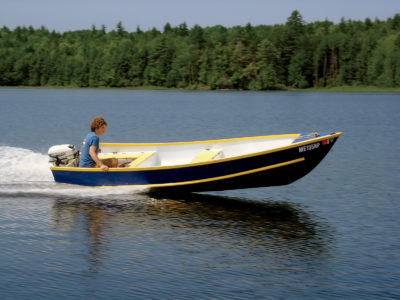
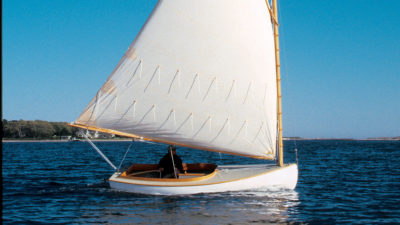
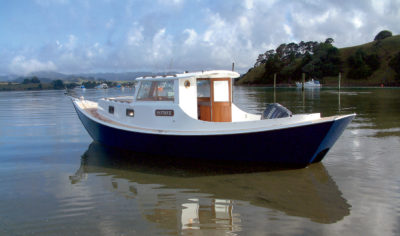

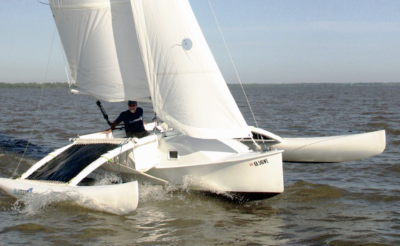
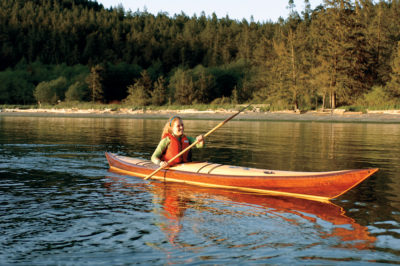
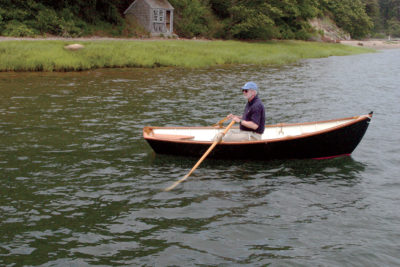
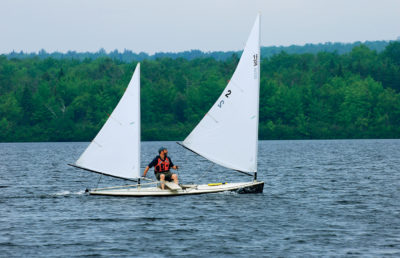
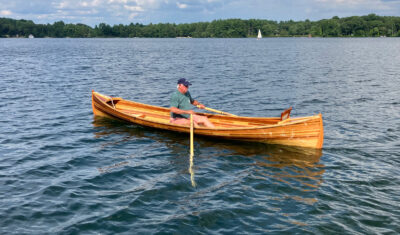
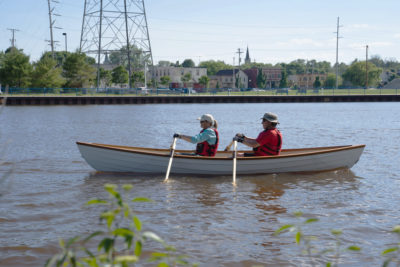
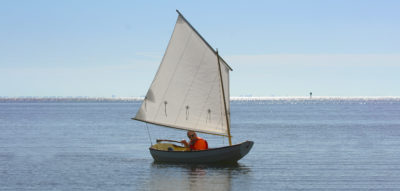
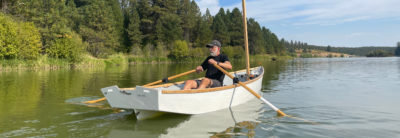
Join The Conversation
We welcome your comments about this article. If you’d like to include a photo or a video with your comment, please email the file or link.